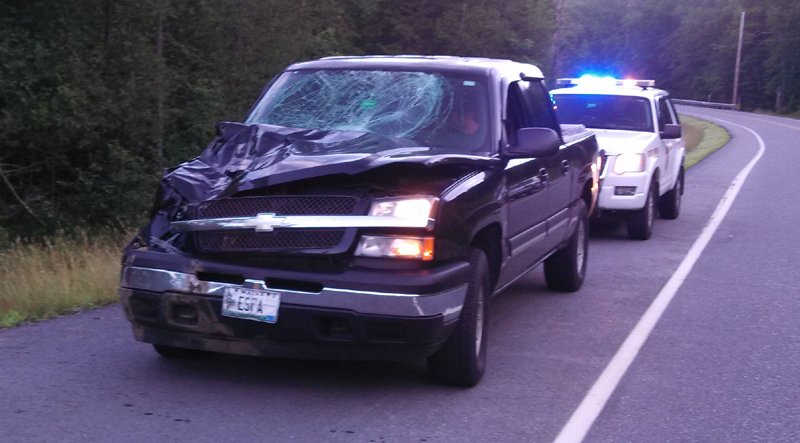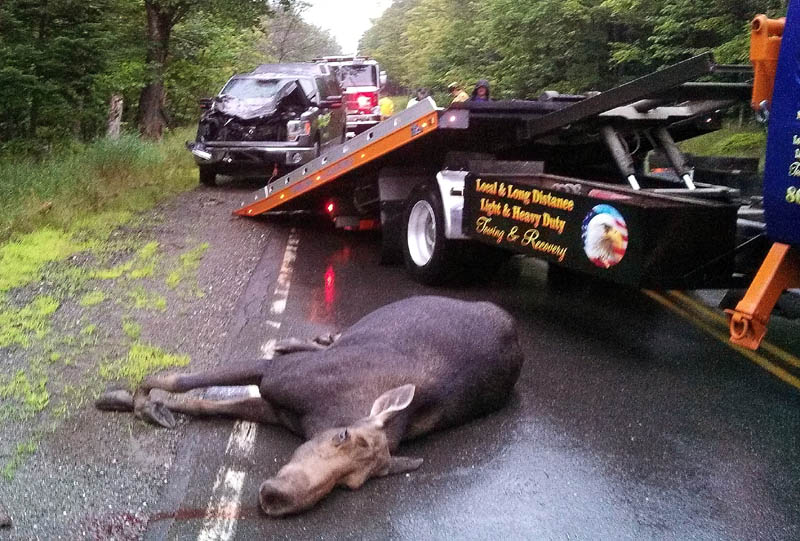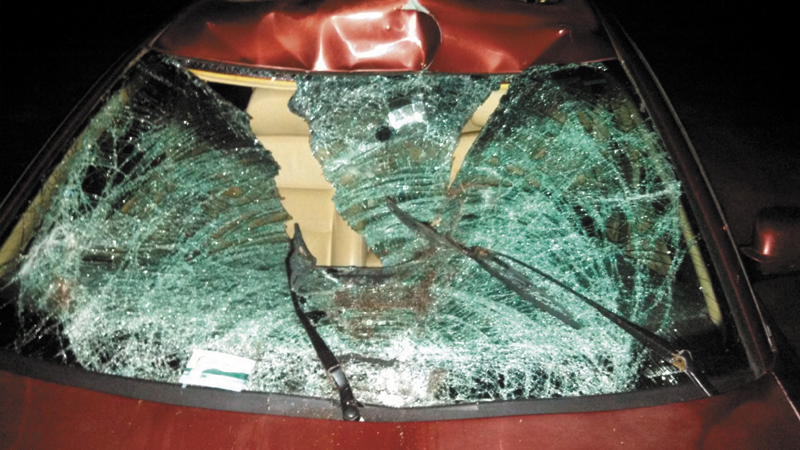The cluster of central Maine moose accidents recently, including five in Franklin County and one Friday in China, is unusual and probably an aberration, but not unheard for this time of year, according to a state biologist.
“I’d expect that in May, June or early July,” said Chuck Hulsey, a Strong-based regional biologist for Maine Department of Inland Fisheries and Wildlife.
Five cars were heavily damaged or destroyed in collisions with moose last week in northern Franklin County, but only one person was reported injured, according to police.
In China on Friday, three people escaped serious injury after the car they were riding in swerved to avoid a moose about 5 p.m. and crashed.
About 550 moose-automobile crashes are reported annually in Maine, though the number dipped below that in two of the last 10 years. By comparison, car accidents involving deer numbered between 2,500 and 4,500 per year over the past 10 years.
Two people were killed in collisions with moose last year, which is about the average during the last 10 years. No fatalities were reported in 2011 and none have been reported so far this year.
Because moose have long legs and heavy bodies, in a collision, the nose of a car will go underneath the moose’s body and the moose will crash through the car’s windshield. Because a moose can weigh up to 1,200 pounds, the accidents can result in serious injuries or death.
“Moose collisions are something that we take very seriously,” said Doug Rafferty, spokesman for the Maine Department of Inland Fisheries and Wildlife.
Rafferty said in a moose collision, the nose of a car will go underneath the moose’s body and the moose will crash through the car’s windshield. Because a moose can weigh up to 1,200 pounds, the accidents can result in serious injuries or death.
“Moose collisions are something that we take very seriously,” Rafferty said.
Rafferty said drivers should reduce speed in the dark, use high beams if possible and be aware of their surroundings.
The number of car-moose crashes spikes around late April and May, takes a minor dip in August, increases in September and then significantly falls off from October until the following May, according to Rafferty.
There are more accidents in the spring, he said, because as the weather warms up, the moose tend to gather near roads where there might be vegetation and salt left over from winter road maintenance.
In September through the middle of October, moose begin to travel more for mating season and are likely to cross roads because they are more mobile.
Lt. David Rackliffe of the Franklin County Sheriff’s Department said drivers should be especially careful when driving after dark because moose are most active around dusk and dawn.
“They are large, unintelligent animals. If startled by a car they may run into the roadway instead of away from it,” he said.
Franklin County has the third highest rate of moose crashes in the state, with between 13 and 17 moose crashes per 100 million miles of road traveled by motorists, according to data from the Inland Fish and Wildlife Department.
Aroostook County has the highest rate, with more than 17 car-moose crashes over the same distance traveled.
In Franklin County, moose tend to be found most commonly north of Farmington, up Route 27, which stretches from the southern border of the county to the Canada border at Coburn Gore, but they are also a problem in the southernmost town in the county, on Route 27 in New Sharon.
Moose particularly like wet, boggy terrain.
The state moose population is estimated at 76,000, which is 10,000 larger than the human population of Portland, the largest city in the state.
Kaitlin Schroeder — 861-9252
kschroeder@mainetoday.com
Send questions/comments to the editors.





Success. Please wait for the page to reload. If the page does not reload within 5 seconds, please refresh the page.
Enter your email and password to access comments.
Hi, to comment on stories you must . This profile is in addition to your subscription and website login.
Already have a commenting profile? .
Invalid username/password.
Please check your email to confirm and complete your registration.
Only subscribers are eligible to post comments. Please subscribe or login first for digital access. Here’s why.
Use the form below to reset your password. When you've submitted your account email, we will send an email with a reset code.